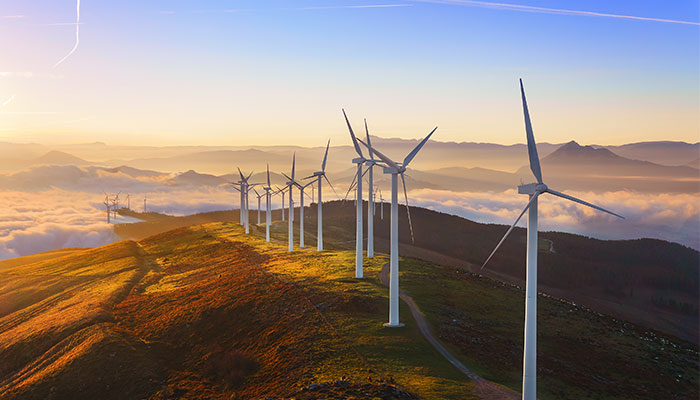The recent emergence of China and South Korea as global leaders in green energy industries is the result of a distinctively ‘East Asian approach,’ according to a new book co-authored by Professor John Mathews from Macquarie University’s Business School and Dr Sung-Young Kim from Macquarie University School of Social Science, together with researchers based at UNSW and Newcastle.

“China and South Korea have become world leaders in key green technologies such as electric vehicles and smart power grids through of the state’s strategic coordination, which has been propelled by geostrategic competition, and unleashed through capitalist market dynamics,” says Professor Mathews.
In Developmental Environmentalism: State Ambition and Creative Destruction in East Asia’s Green Energy Transition, released in May, the authors explore the history, context and impacts of East Asia’s dramatic incursion into the green industries of the future.
They show that East Asia’s green energy transition involves a fundamental transformation underway in the region, driven by a new generation of leaders committed to building a more sustainable future.
“This involves a sophisticated kind of economic statecraft that strategically harnesses the capitalist market dynamics of ‘creative-destruction’ to advance transformative green industrial objectives through Green Growth,” says Dr Kim.
“This approach is about real action that delivers economic impacts rather than mere exercises in ‘greenwashing’ or fossil-fuelled ‘businesss-usual’,” he adds.
Green Growth agenda
The origins of East Asia’s current energy transition emerged in the early 2000s, when concerns about energy security and climate change were high on the agenda for both China and South Korea, while also facing rising competition in the global manufacturing sector from other countries.
Australia has the resources, the skills and the ingenuity to be a global leader in green energy but we need to act now.
Both governments responded with ambitious national initiatives to develop new green industries, in particular platform industries seen as critical to a clean energy shift such as electric vehicles and smart power grids.
“A critical component was having the private sector participate in government-guided programs, because their resources and market power meant they could create and rapidly scale-up new green innovations,” says Mathews.
China and South Korea now lead the world in production of solar panels, wind turbines, and batteries, and high voltage power lines, all fast-growing industries that have created millions of jobs in their economies.
In each case, Green Growth initiatives were also being accompanied by the coordinated phase-out of the old fossil-fuel based system such as coal-powered energy generation and the internal combustion engine.
Bold scaling-up
The book argues that East Asia’s ‘developmental-environmental’ strategies have not only facilitated the creation of new national green industries but are helping these countries to scale-up the use of renewable energy faster and more boldly than ever before.

Ahead of the pack: Researchers say China and South Korea now lead the world in production of solar panels, wind turbines (pictured), and batteries, all fast-growing industries that have created millions of jobs in their economies.
The book covers four detailed case studies on green industry creation and fossil-fuel phase-out which indicate some key successes and failures.
“The Chinese and Korean governments’ Green Growth initiatives were driven by deep-seated concerns over national techno-economic competitiveness and energy security, which has practical benefits for mitigating climate change,” says Kim.
He adds that domestic political factors (eg. increasing economic inequality, smog and dust filled skies) have also played an important role in influencing the pace and approach to greening initiatives, which have contributed towards the plummeting costs of renewables globally.
“Along with the advent of hyper-competition over green technologies, and the escalation of geopolitical rivalry between the U.S and China, the rapidly changing domestic and international environment has opened up new opportunities to further advance East Asia’s growing and greening goals,” says Kim.
Opportunity for Australia
The rapidly changing dynamics of the region present challenges for major fossil-fuel energy exporting countries like Australia, says Mathews.
“However, we should not discount the opportunities that lie await for Australia as a green technology leader with abundant renewable energy resources for potential export, including solar, wind, and hydro,” he says. “Australia also has the potential to become a major producer of green hydrogen.”
The Australian government’s $25 billion plan to support the development of the clean energy sector includes funding for research and development, infrastructure, and training, and also involves Green Economy partnerships countries in the East Asian region including Korea, Japan and Singapore.
“Australia has the resources, the skills and the ingenuity to be a global leader in green energy,” said Mathews.
“But we need to act now, or we will miss out on this once-in-a-century opportunity.”
John Mathews is Emeritus Professor in the Department of Management at the Macquarie University Business School.Dr Sung-Young Kim is Senior Lecturer in International Relations at the Macquarie School of Social Sciences.








